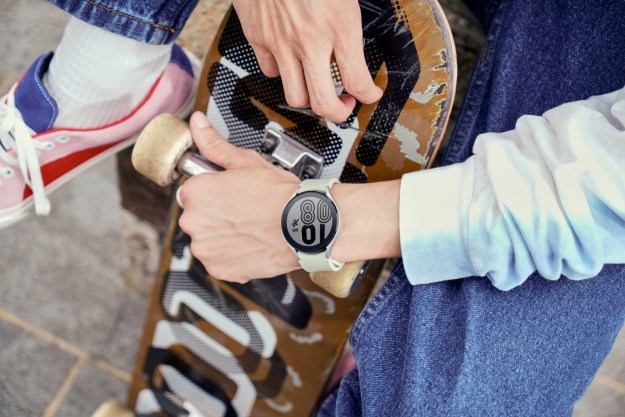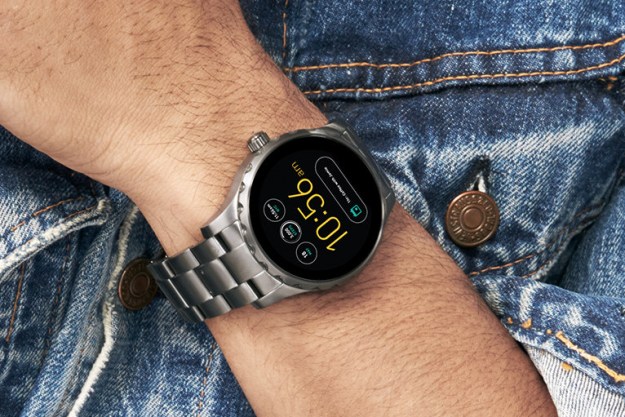Every once in a while, we see technology that is unlikely to actually be experienced by most people, but is truly transformative and life-changing for select people. That perfectly describes eSight, a pair of smartglasses that give blind people the ability to see. That’s amazing enough, but the glasses — which look like a cross between PlayStation VR and the Avegant Glyph — are so effective that in some cases the previously blind person may have the best sight in the room when wearing them.
We met Rosa Henderson, who is legally blind and has been since birth, at CES. She has been wearing eSight for several months, and her story is one that shows the human side of cutting-edge modern tech. She didn’t talk about how something helped her productivity, or solved a very specific problem, but about something that lets her live. She said eSight gives her control over everyday life, confidence, and independence like no other device before it. It enables her to do the everyday things most people take for granted.
High-tech vision
An example? Henderson talked about attending classes at college, where she would normally have to make special arrangements ahead of time to sit at the very front of the room, and often bring an assistant along to help with dictation and note-taking. That’s after making the journey to the college in the first place, which may have involved the help of other people, using a cane, or owning a service animal — and always required considerable planning. Not impossible, but hugely restrictive, and very reliant on others. It’s hard for sighted people to understand how difficult all this is. Imagine performing your everyday routine with your eyes closed, and it’s probably pretty similar.
Henderson explained that without eSight, she sees nothing long distance, and couldn’t make out my facial features at all when I was sat less than a meter away. Yet with eSight on, not only could she see what I looked like, but she attends those classes without making any prior arrangements, travels safely on her own, and works in the class on her own anywhere she likes.
The classroom experience is a microcosm of real life. Reading signs, being able to see long distances, crossing roads, recognizing people, and even using an Apple Watch is is now possible for Henderson and other eSight wearers. To hear her describe the difference it has made to her life is extremely uplifting.
It’s not the first assistive device she has used, having had experience with everything from a cane to a massive magnification machine that resembled an old microfiche reader and allowed her to view documents. While these often assisted with a single task, none were very convenient, and some didn’t even work well at all.
Everything is solved with eSight, because it enables the wearer to actually see.
Better than 20/20
The eSight is a visor-like device worn on the head, with a pair of corrective glasses built in if they’re needed. A high-speed camera views the world around the wearer, projecting the image onto a pair of OLED screens, where special software enhances and cleans up the image. There’s no lag, the images produced don’t have a digital appearance, and because the visor can be lowered and lifted, peripheral vision isn’t ruined. It’s arguably the true definition of augmented reality.
A high-speed camera views the world around the wearer, projecting the image onto a pair of OLED screens, where special software enhances and cleans up the image.
How much does it change vision? Incredibly, Henderson has the equivalent of 20/20 sight using it. A zoom feature, which is controlled with a linked handset, means she may see further and often with more clarity than sighted people. There’s even an HDMI port to plug in a media device, so the headset acts like a virtual reality display for watching TV and movies. The whole thing is easy to put on, adjust, and take off, thanks to a clever system of magnets. Henderson admits the device could be lighter, but that’s something to work on for the next version.
Unfortunately, eSight costs $10,000, which makes it prohibitively expensive. However, the passion and commitment shown not just by Henderson, but also by Jeff Fenton, eSight’s Director of Outreach, is infectious. To help get eSight into the hands of people who need it, the company offers a financing plan, plus a way to donate and contribute to a worthy cause — making blindness a thing of the past by 2020. We may get all excited over the latest phone, wearable, or game console, but millions of people could experience the same level of freedom and independence as Henderson does by using eSight, and that puts it on a different level.








